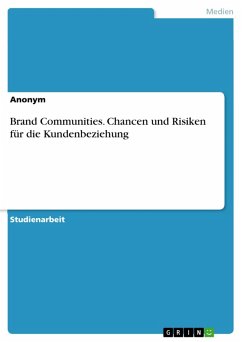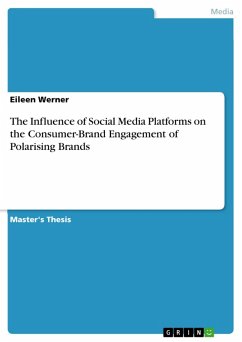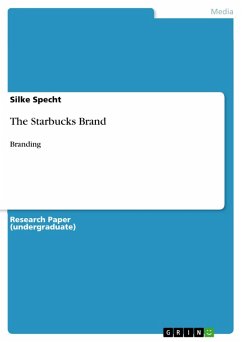Bachelor Thesis from the year 2007 in the subject Communications - Public Relations, Advertising, Marketing, Social Media, grade: 1,1, , course: Bachelor of Advertising and Marketing, language: English, abstract: "The brand community is a concept that sheds a new light on the relationships between consumers and a specific brand: they are no longer considered as dyadic relationships between a brand and an isolated consumer (Fournier, 1998) but rather as relationships overlapping associations and interactions among consumers within a specific group." (Gruen et al, 2000) Brand communities gained in importance in recent years for companies with a high situated brand and as it is still an issue to define the special relationship and the concept itself, this dissertation will help to understand the meaning of a brand community and discuss the perceptions of consumers towards brand communities in context with mutual benefits. An understanding of the special relationship between company and community members is being outlined. The brand community presents a special interest both for marketing researchers and brand managers because it gives new theoretical perspectives on key concepts and considerable implications for marketing strategies. (Abdelmajid & Sitz, 2004) Brand communities became a crucial factor regarding to the marketing planning process and in terms of value of a brand. They have become one of the most encouraging developments in relationship marketing in recent years. (von Loewenfeld, 2004) Therefore it is important to outline and examine the brand community concept and put it in context with the theory of relationship marketing, brand management, buyer behaviour and customer loyalty programmes. These four elements are the factors which play the crucial role on which basis the brand community concept is being established. To make this work the perceptions of the existing as well as the potential customers needs to be explored. The author has investigated the perceptions, concerns and opinions of 200 consumers between 18 and 30 throughout different social groups and geographical locations. This gives an overview about the awareness and actual use of brand communities among the target audiences.
Dieser Download kann aus rechtlichen Gründen nur mit Rechnungsadresse in A, B, BG, CY, CZ, D, DK, EW, E, FIN, F, GR, HR, H, IRL, I, LT, L, LR, M, NL, PL, P, R, S, SLO, SK ausgeliefert werden.









